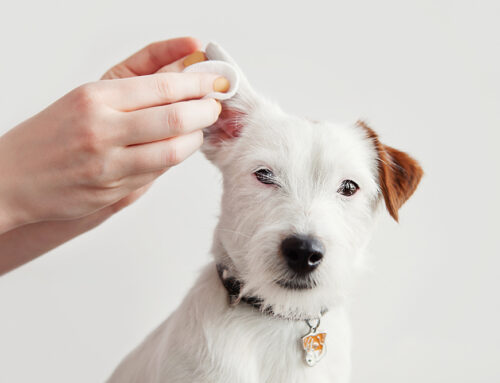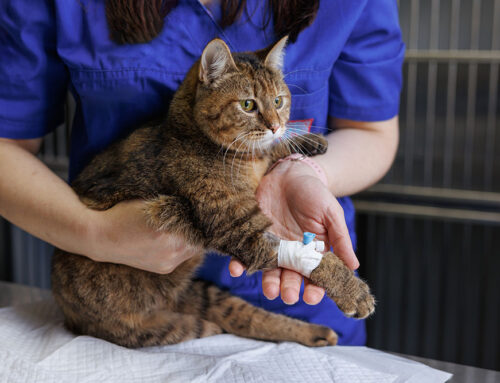Tiny Trouble: How Grass Awns Can Harm Your Pet
If you’ve ever brushed your dog after a romp through tall grass and found barbed seeds tangled in their coat, you’ve met the grass awn. These tiny plant parts may seem like an unavoidable nuisance, but they can cause serious- and sometimes life-threatening- medical issues in pets.
At Memorial Villages Animal Hospital in Houston, Texas, we want families to understand the risks before a small seed turns into a major problem.
What Exactly Are Grass Awns?
Grass awns are the sharp, barbed seed heads produced by wild grasses such as foxtail or cheatgrass. Nature designed them to travel. Tiny hooks allow them to latch onto fur or clothing and then burrow inward through skin or soft tissues.
In Houston’s climate, these seeds can be found almost year-round. They often go unnoticed until a pet begins shaking their head, licking a paw, or sneezing repeatedly. Once attached, they can enter through the ears, nose, eyes, mouth, or skin and begin migrating forward.
Foxtails are dangerous for dogs, and the same risks apply to cats who explore yards and fields.
Why Grass Awns Are So Dangerous
Unlike splinters, awns don’t stay put. They migrate deeper with every movement, carrying bacteria and creating painful inflammation along the way. Left untreated, they can cause:
- Abscesses and draining tracts
- Chronic ear infections that resist medication until the foxtail is removed
- Severe respiratory infections if inhaled
- Corneal ulcers or even vision loss
- Organ damage if they reach the chest or abdomen
- Neurologic problems in rare but severe cases
Because they only move forward, the body cannot expel them on its own. Prompt veterinary care is always required.
Where They Hide and What to Watch For
Grass awns can lodge almost anywhere, but certain spots are especially high-risk:
- Paws – constant licking, limping, swelling between toes
- Ears – head shaking, scratching, crying, odor
- Nose – sneezing fits, discharge, or nosebleeds
- Eyes – squinting, redness, discharge, pawing at face
- Skin – lumps, draining wounds, excessive licking
- Throat/Chest – coughing, lethargy, breathing changes
Sometimes the signs are subtle, such as mild limping or small wounds that don’t heal. Even these should be taken seriously, since migration can begin within hours.
How Quickly They Become a Problem
Foxtails don’t wait. They can reach deeper tissues, muscles, or even organs within a few days. What starts as a sore paw may progress to multiple abscesses, or repeated sneezing may signal a seed moving toward the lungs.
That’s why same-day veterinary evaluation is always the safest choice. At MVAH, our emergency and urgent care service is equipped to assess and treat foxtail injuries during business hours- so you don’t have to wait and worry.
How Memorial Villages Animal Hospital Diagnoses Awn Injuries
Because awns don’t always show on X-rays, diagnosis often requires a combination of tools and expertise. At Memorial Villages Animal Hospital, evaluations may include:
- Physical exam – focusing on paws, ears, eyes, nose, and skin
- Otoscopy or rhinoscopy – for detailed views of ears and nasal passages
- Digital imaging – such as ultrasound or X-rays to search for hidden seeds
- Exploratory surgery when deep migration is suspected
Sometimes foxtails are not found on the first attempt, or there may be more than one lodged in the same area. Careful rechecks and monitoring are critical to ensure complete removal.
Treatment Options at MVAH
Treatment depends on where the awn has traveled, but typically involves:
- Sedation to help your pet stay still and comfortable during extraction
- Manual removal when the seed is visible and accessible
- Surgical extraction if it has migrated deeper
- Antibiotics to combat nearly inevitable infection
- Pain management to reduce inflammation and discomfort
- Supportive care including wound cleaning and bandaging
- Cold laser therapy to reduce swelling and speed healing
Because foxtails nearly always cause infection, antibiotics and follow-up monitoring are standard parts of every treatment plan.
Life Without Prompt Treatment
When foxtails go untreated, the consequences escalate quickly:
- Persistent pain and chronic infections
- Permanent damage to ears, eyes, or lungs
- Prolonged recovery times
- More invasive surgery with higher costs
Even mild signs, like a single swollen paw, can progress into a serious condition within days. Early action is always safer and easier than waiting.
Prevention Tips for Houston Pet Owners
While you can’t remove every risk, consistent habits reduce the chances of trouble:
- Avoid tall grass and weedy areas during walks
- Inspect your pet’s paws, eyes, ears, and coat after every outing
- Brush and bathe regularly, especially in breeds with long coats
- Keep your yard trimmed to limit foxtail growth
- Use protective gear like Outfox hoods or boots
- Rely on regular grooming to catch seeds before they burrow
These steps, paired with quick veterinary care when something looks off, make a powerful prevention plan.
Recovery and Life After a Foxtail Injury
After treatment, recovery may involve:
- Restricted activity while wounds heal
- Daily medication as prescribed
- E-collar use to prevent licking or chewing
- Follow-up appointments to check for infection or missed fragments
- Supportive care like cold laser therapy to ease pain and speed healing
Some pets heal quickly, while others may need weeks of monitoring. Our team guides you through every step and provides rechecks to ensure a full recovery.

For smoother at-home care, cooperative handling techniques, like those described in Preventive Vet’s guide, help pets accept wound checks and medication calmly.
FAQs About Grass Awns
Can cats get foxtail injuries?
Yes. Outdoor cats are at risk, especially in their ears, eyes, and paws.
Are foxtails seasonal?
In cooler climates, yes. But in Houston’s warm weather, they can be a concern almost year-round.
Can foxtails be fatal?
Yes. Migration into the lungs, chest, or abdomen can cause severe, life-threatening infections.
Can I pull one out at home?
If it’s sitting on the surface, yes. But once swelling or pain begins, or if the seed has disappeared under the skin, professional care is required.
Protecting Pets from Hidden Dangers
Grass awns may be small, but their impact can be significant. With prevention, quick checks after outdoor play, and timely veterinary care, your pet can stay safe and healthy.
At Memorial Villages Animal Hospital, we combine AAHA-level care, advanced diagnostics, skilled surgery, and supportive therapies like cold laser treatment to resolve foxtail injuries effectively. Our team is committed to making every visit as calm and stress-free as possible.
If you notice limping, sneezing, or head shaking after outdoor play, don’t wait. Book online today or contact us directly. For urgent concerns, our emergency and urgent care services are available during regular business hours. Acting quickly protects your pet’s comfort and keeps backyard adventures safe.









Leave A Comment